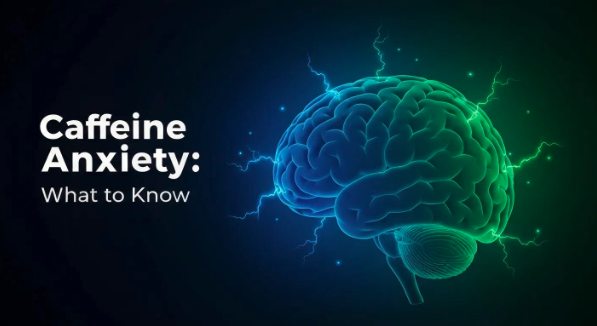Coping Strategies for Emotional Instability
Discover effective methods for coping with emotional instability and find your path to greater emotional balance.

Understanding Emotional Instability
Emotional instability is a condition characterized by rapid and intense fluctuations in mood. This section will delve into the impacts of emotional volatility and the recognition of emotional dysregulation.

Impact of Emotional Volatility
Emotional volatility can significantly affect daily life. Individuals with mood disorders, such as Borderline Personality Disorder (BPD), may experience emotional extremes that can disrupt relationships and overall functioning. According to Verywell Mind, those with BPD often feel emotions more intensely than others, which can lead to exaggerated reactions to certain triggers.
Emotional ImpactDescriptionIntense EmotionsExperience heightened emotional responses compared to others.Long DurationEmotions may last significantly longer than normal.DisruptionEmotional highs and lows may lead to difficulties in everyday life and relationships.
Recognizing Emotional Dysregulation
Emotional dysregulation refers to the inability to manage and respond to emotional experiences in a healthy manner. Several factors can contribute to this condition, including early childhood trauma, neglect, and chronic invalidation. Additionally, circumstances such as traumatic brain injuries can influence the brain's neurotransmitter function.
Certain disorders are associated with emotional dysregulation, including:
Associated DisordersImpact on Emotional RegulationPTSDDisruption in emotional regulation and coping mechanisms.Borderline Personality Disorder (BPD)Intense emotional instability influencing relationships and behavior.Frontal Lobe DisordersAltered emotional responses and impulse control.Obsessive-Compulsive Disorder (OCD)Difficulty in managing emotional responses related to compulsions.
Understanding emotional volatility and dysregulation is essential for individuals navigating mood disorders. Those experiencing these symptoms can benefit from exploring lifestyle changes to manage mood disorders and strategies for fostering emotional resilience found in our article on strategies for emotional resilience. Recognizing early signs of mood dysregulation can lead to earlier intervention, providing better outcomes for emotional stability. For more on this topic, visit our resource on recognizing early signs of mood dysregulation.
Coping Strategies for Emotional Instability
Developing effective coping strategies is crucial for managing emotional instability. Here are three key methods that can significantly improve emotional well-being.
Importance of Quality Sleep
Quality sleep plays a vital role in reducing emotional volatility. Most adults should aim for seven to nine hours of sleep each night to help manage their emotional responses more effectively [2]. Sleep loss and insomnia can heighten emotional reactivity, making it harder for individuals to navigate daily challenges. Studies indicate that inadequate sleep can enhance negative emotional reactions while dampening positive ones, which can severely impact daily functioning.
AspectImpact of Quality SleepEmotional ReactivityReduces negative reactivityEmotional ArousalLowers sensitivity to stressDaily FunctioningEnhances overall functioning
Adequate sleep helps restore daily functioning and is essential for coping with emotional stress. The interconnection between sleep and emotions underscores the importance of effective emotion regulation for improved sleep quality. For more information about this relationship, refer to our article on the role of sleep in mood regulation.
Benefits of Regular Exercise
Regular physical activity is another effective strategy for promoting emotional stability. Exercise can aid in maintaining a more stable emotional state and can be particularly beneficial for those dealing with mood disorders. Research supports the idea that regular exercise can mitigate problems associated with emotional dysregulation, enhancing overall physical and mental health.
Exercise TypeBenefitsAerobic ActivitiesReduces stress and anxietyStrength TrainingBoosts self-esteemFlexibility WorkPromotes relaxation
Incorporating various types of exercise into a daily routine can improve mood and overall emotional resilience. For additional lifestyle changes that can help manage mood disorders, visit our page on lifestyle changes to manage mood disorders.
Practice of Mindfulness
Mindfulness practices, including meditation, have been shown to assist individuals in managing emotional instability. By helping individuals focus their attention during moments of distress, mindfulness can effectively reduce anxiety and stress [2].
Mindfulness TechniqueBenefitMeditationEnhances focus and relaxationBreathing ExercisesReduces physical tension and stress
Implementing mindfulness techniques can create a buffer against emotional turmoil, offering tools for better emotional management. For strategies related to emotional resilience, explore our article on strategies for emotional resilience.
Therapy Options for Emotional Stability
Therapy plays a crucial role in coping with emotional instability and can provide individuals with the tools they need to manage their feelings effectively. Several therapeutic approaches have been developed to address emotional dysregulation, particularly for mood disorders. This section explores three notable therapy options: Dialectical Behavioral Therapy (DBT), Mentalization-Based Therapy (MBT), and Schema Therapy (ST).
Dialectical Behavioral Therapy (DBT)
Dialectical Behavioral Therapy is the only empirically supported treatment specifically for Borderline Personality Disorder (BPD). According to a 2016 review, DBT has been confirmed to reduce self-harm and hospitalizations while assisting individuals in maintaining treatment engagement [4].
DBT focuses on teaching skills in four main areas:
Skill AreaDescriptionMindfulnessEnhancing awareness of the present momentDistress ToleranceLearning to tolerate painful emotionsEmotion RegulationManaging and changing intense emotionsInterpersonal EffectivenessNavigating relationships and assertiveness
DBT combines cognitive-behavioral techniques with mindfulness and acceptance practices, making it a comprehensive approach to improving emotional stability.
Mentalization-Based Therapy (MBT)
Mentalization-Based Therapy is another therapeutic option that has shown promise, particularly for those with BPD. A 2019 review indicated that MBT may be equally beneficial as other therapies for BPD; however, researchers emphasized the need for more high-quality and unbiased studies to fully understand its effectiveness [4].
MBT focuses on helping individuals improve their capacity to understand their own emotions and the emotions of others. This self-awareness can lead to enhanced interpersonal relationships and better emotional regulation.
Schema Therapy (ST)
Schema Therapy aims to reshape deeply ingrained patterns of thinking and behavior. This approach revisits early life situations that may have had a negative impact on an individual's emotional health. Preliminary studies have indicated promise for group Schema Therapy as a treatment for BPD, although further research with larger participant groups is needed to establish its efficacy [4].
Schema Therapy identifies harmful schemas and provides strategies to replace them with healthier patterns. By addressing these core beliefs, individuals can make significant progress in achieving emotional stability.
Each of these therapy options offers unique strategies for managing emotional instability. Individuals are encouraged to explore different forms of therapy to find the one that best aligns with their needs and experiences. For additional insights, you can also look into lifestyle changes to manage mood disorders and understanding irritability in mood disorders.
Medication and Treatment Approaches
Addressing emotional instability often involves a comprehensive treatment strategy that may include medication. Various classes of medications can help stabilize mood and reduce symptoms associated with emotional dysregulation. Below are three main categories of medications used to treat mood disorders: antidepressants, mood stabilizers, and antipsychotics.
Antidepressant Medications
Antidepressants are commonly prescribed for various mood disorders, particularly in cases of major depression. However, research indicates that they offer limited benefit for conditions like Borderline Personality Disorder (BPD) outside major depressive episodes. According to rigorous reviews, only amitriptyline—a tricyclic antidepressant—has shown some efficacy in managing BPD symptoms beyond those related to depression. Nonetheless, its use is limited due to risks associated with severe toxicity in overdose [5].
AntidepressantCommon UsesEfficacy for BPDAmitriptylineMajor depressionLimited, beyond major depressionSSRIsGeneral anxiety and depressionVariable resultsSNRIsGeneralized anxietyNot typically effective for BPD
Mood Stabilizers
Mood stabilizers such as topiramate, lamotrigine, and valproate semisodium have demonstrated effectiveness in treating symptoms of aggression, impulsivity, and emotional instability, particularly in individuals with BPD. Clinical trials have revealed improvements in overall functioning, interpersonal sensitivity, and reduced hostility and aggression in patients treated with these medications.
Mood StabilizerBenefitsPatient OutcomesTopiramateReduces impulsivityImproved global functioningLamotrigineStabilizes moodEnhanced interpersonal relationsValproate semisodiumMitigates aggressionDecreased hostility levels
Antipsychotic Medications
Antipsychotic medications are frequently prescribed for managing symptoms related to mood disorders, especially in individuals exhibiting impulsivity and aggression. Medications like olanzapine, aripiprazole, and haloperidol have been shown to relieve impulsivity, hostility, and anxiety while also alleviating psychotic symptoms associated with BPD. However, it is noteworthy that olanzapine can lead to metabolic side effects, which may pose additional health risks(NCBI).
AntipsychoticMain EffectsSide EffectsOlanzapineReduces impulsivity and psychotic symptomsMetabolic side effectsAripiprazoleAlleviates hostility and aggressionGenerally fewer side effectsHaloperidolAddresses severe agitation and psychosisRisk of extrapyramidal symptoms
Medication can be an essential aspect of coping with emotional instability. It is important to consult healthcare professionals for tailored treatment plans and to monitor for any potential side effects. Combining medication with therapy options and lifestyle changes can further enhance emotional stability and overall well-being. For additional information on managing mood disorders, consider exploring lifestyle changes to manage mood disorders or mood tracking tools.
Early Intervention and Support
Recognizing Early Signs
Identifying early signs of emotional instability is crucial in preventing the escalation of mood disorders. Symptoms may vary, but common indicators include sudden mood swings, prolonged sadness, irritability, and persistent feelings of hopelessness. It is essential for individuals and their support systems to recognize these signs early. Research indicates that early intervention can help reduce severity, prevent interruptions in quality of life, and potentially delay or prevent major mental illnesses altogether.
To facilitate recognition of early symptoms, a table listing common indicators can be helpful:
Emotional Instability SignsDescriptionMood SwingsRapid changes in emotional states, often without a clear trigger.Prolonged SadnessFeelings of sadness lasting weeks or longer, impacting daily life.IrritabilityIncreased sensitivity and frustration over small issues.Feelings of HopelessnessA pervasive sense of despair and lack of optimism for the future.
Monitoring one's mood and behaviors can be complemented by tools like the mood tracking: tools and benefits for managing mood disorders to aid in early recognition.
Involvement of Family Members
Family members can play a vital role in the management of emotional instability. Their involvement can provide essential support and understanding, making a significant difference in an individual's coping journey. Family education is crucial; understanding mental illness can empower family members to recognize symptoms and encourage healthy coping strategies. According to the American Psychiatric Association, families should be integrated into the treatment process wherever possible.
Moreover, treatment should be individualized and may include components such as ongoing individual sessions, family counseling, vocational and educational support, and participation in problem-solving groups. This comprehensive approach can lead to improved outcomes for individuals facing emotional challenges and help prevent the progression of early symptoms into more severe conditions [6]. Recognizing stigma as a barrier to seeking help is also essential. Family support can assist individuals in navigating these challenges while providing a safe space for discussion and growth.
By fostering an environment where open communication and support are prioritized, families can foster resilience and stability in the face of emotional challenges. For more insights into enhancing emotional health, consider exploring strategies for emotional resilience and understanding irritability in mood disorders.
Improving Emotional Health
Sleep and Emotional Regulation
Adequate sleep plays a vital role in coping with emotional instability and managing mood disorders. Quality sleep is essential for restoring daily functioning and emotional balance. Insufficient sleep can lead to heightened emotional arousal and increased sensitivity to stressors, negatively impacting overall emotional regulation. Studies suggest that sleep loss and insomnia can impair emotional reactivity and social functioning.
Sleep DurationEmotional Regulation Effect7-9 hoursOptimal emotional stability5-6 hoursIncreased emotional sensitivityLess than 5 hoursHigh vulnerability to emotional dysregulation
Individuals struggling with mood disorders should prioritize consistent sleep schedules and create conducive sleep environments. Practicing good sleep hygiene can significantly enhance emotional well-being, leading to improved coping strategies during difficult times.
Impact of Emotional Stress on Sleep
Emotional stress greatly affects sleep quality and physiology. Stressful experiences can disrupt sleep cycles and lead to insomnia or fragmented sleep. The relationship between daily emotional events and changes in sleep physiology is significant. Emotion regulation, coping style, and effective strategies can help mitigate the detrimental effects of emotional stress on sleep [3].
Stress LevelImpact on Sleep QualityLowStable sleep patternsModerateOccasional disturbancesHighSevere insomnia or non-restorative sleep
Addressing the underlying causes of emotional stress can facilitate better sleep quality and emotional regulation. Utilizing relaxation techniques, seeking support, or engaging in stress management strategies are beneficial avenues worth exploring for those facing emotional instability. For additional resources, learn more about lifestyle changes to manage mood disorders or strategies for emotional resilience.
References
[2]:
[3]:
[4]:
[5]:
[6]:
More Resources
A team ready to start your journey.
Get in touch — today.
We are a safe space – a haven for exceptional individuals to receive discreet, personalized, in-person treatment and care.
.avif)



.webp)






